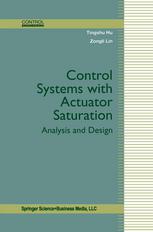

Most ebook files are in PDF format, so you can easily read them using various software such as Foxit Reader or directly on the Google Chrome browser.
Some ebook files are released by publishers in other formats such as .awz, .mobi, .epub, .fb2, etc. You may need to install specific software to read these formats on mobile/PC, such as Calibre.
Please read the tutorial at this link: https://ebookbell.com/faq
We offer FREE conversion to the popular formats you request; however, this may take some time. Therefore, right after payment, please email us, and we will try to provide the service as quickly as possible.
For some exceptional file formats or broken links (if any), please refrain from opening any disputes. Instead, email us first, and we will try to assist within a maximum of 6 hours.
EbookBell Team

0.0
0 reviewsSaturation nonlinearities are ubiquitous in engineering systems. In control systems, every physical actuator or sensor is subject to saturation owing to its maximum and minimum limits. A digital filter is subject to saturation if it is implemented in a finite word length format. Saturation nonlinearities are also purposely introduced into engineering systems such as control sys tems and neural network systems. Regardless of how saturation arises, the analysis and design of a system that contains saturation nonlinearities is an important problem. Not only is this problem theoretically challenging, but it is also practically imperative. This book intends to study control systems with actuator saturation in a systematic way. It will also present some related results on systems with state saturation or sensor saturation. Roughly speaking, there are two strategies for dealing with actuator sat uration. The first strategy is to neglect the saturation in the first stage of the control design process, and then to add some problem-specific schemes to deal with the adverse effects caused by saturation. These schemes, known as anti-windup schemes, are typically introduced using ad hoc modifications and extensive simulations. The basic idea behind these schemes is to intro duce additional feedbacks in such a way that the actuator stays properly within its limits. Most of these schemes lead to improved performance but poorly understood stability properties.